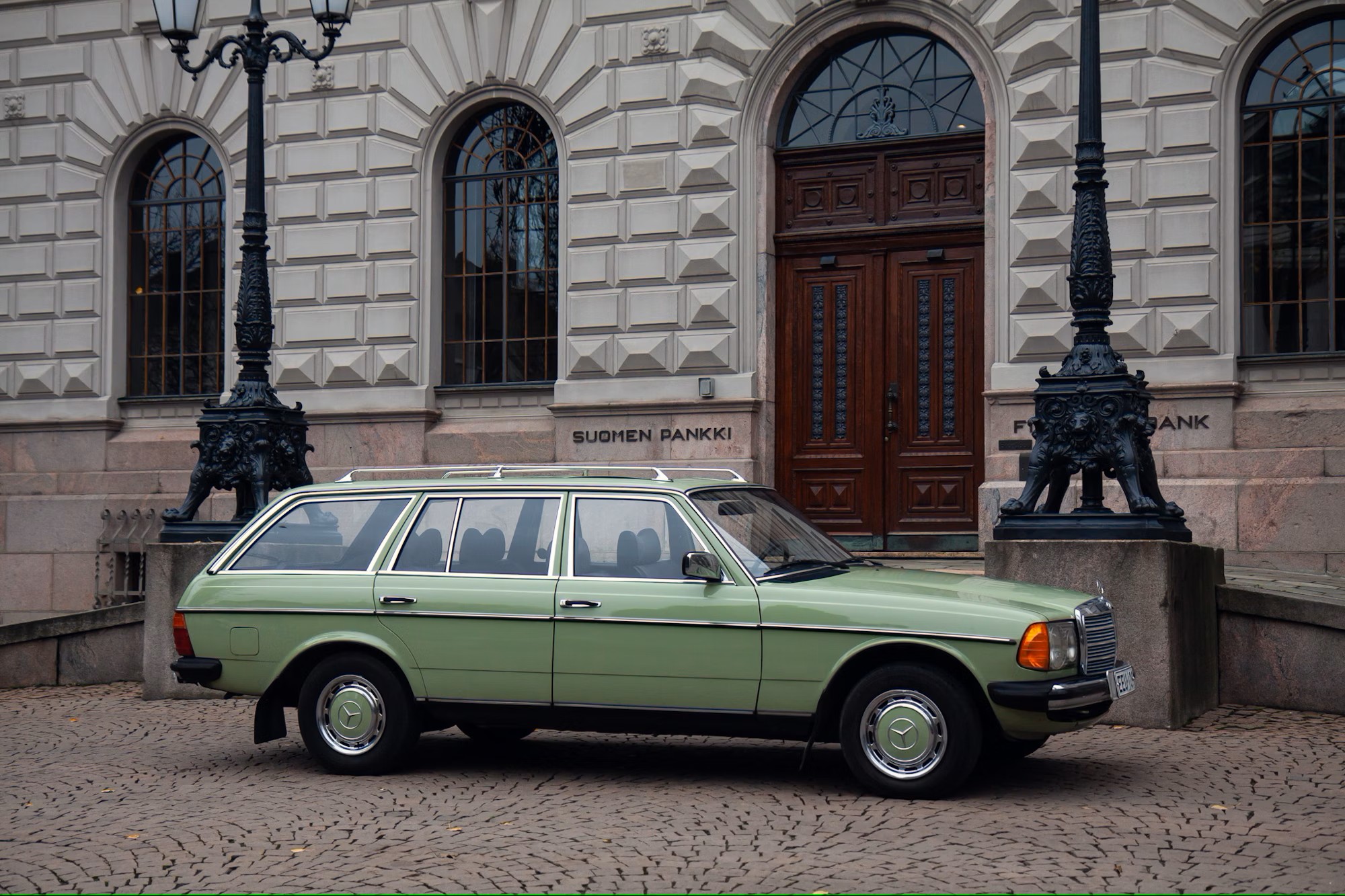Diesel engines have long been celebrated for their exceptional longevity, fuel efficiency, and robust construction. However, not all diesel vehicles are created equal, and the introduction of turbocharging technology has created a fascinating divide in the automotive world.
While some diesel cars have earned legendary status for their ability to accumulate hundreds of thousands of miles with minimal maintenance, others have become cautionary tales of premature turbocharger failures that can leave owners facing expensive repairs.
The reliability spectrum of diesel vehicles is remarkably wide, ranging from bulletproof workhorses that seem almost indestructible to temperamental machines that require constant attention and costly interventions.
This disparity often comes down to fundamental design philosophies, manufacturing quality, maintenance requirements, and the complexity of emissions control systems.
Rare diesel cars that have achieved legendary status typically feature simpler, more robust designs with naturally aspirated engines or well-engineered turbocharging systems that can withstand decades of abuse.
On the opposite end of the spectrum, many common diesel vehicles, particularly those produced during the rapid evolution of emissions standards, have suffered from turbocharger reliability issues that can manifest surprisingly early in their service life.
These problems often stem from aggressive tuning for performance and emissions compliance, inadequate cooling systems, poor oil quality management, or design compromises made to meet cost targets and regulatory requirements.
Understanding the difference between these two categories is crucial for anyone considering a diesel vehicle purchase, whether for daily transportation, commercial use, or long-term investment.
The rare diesel cars that “run and run” represent the pinnacle of mechanical engineering, where simplicity meets durability, while the common diesels with early turbo failures serve as important lessons about the potential pitfalls of complex modern diesel technology when not properly executed or maintained.
5 Rare Diesel Cars That Run and Run
These exceptional diesel vehicles deliver extraordinary longevity through robust engine construction, conservative tuning, and proven mechanical systems that enable hundreds of thousands of miles of reliable service while maintaining excellent fuel economy and torque characteristics.
Their solid engineering incorporates heavy-duty components, adequate cooling systems, and simple fuel injection that resists contamination and wear far better than complex modern diesels with fragile emissions equipment and overstressed turbochargers.
The combination of appreciating collector values, straightforward maintenance, and legendary durability creates ownership experiences that reward patience with decades of dependable operation.
From respected manufacturers with diesel expertise to understated models with extensive real-world testing, these vehicles demonstrate that diesel excellence comes through fundamental mechanical strength rather than advanced technology, providing efficient transportation that outlasts more common competitors through superior engineering philosophy and robust construction that prioritizes longevity over performance numbers.
1. Mercedes-Benz W123 300D (1976-1985)
The Mercedes-Benz W123 300D stands as perhaps the most legendary diesel passenger car ever produced, earning a reputation for reliability that borders on mythical.
Built during Mercedes-Benz’s golden era of over-engineering, these vehicles were constructed with a level of quality and attention to detail that has rarely been matched in modern automotive manufacturing.
The heart of this remarkable machine is the naturally aspirated OM617 five-cylinder diesel engine, a powerplant so robust that many examples have exceeded 500,000 miles with nothing more than routine maintenance.
What sets the W123 300D apart from virtually every other diesel car is its fundamentally conservative engineering approach. The OM617 engine operates at relatively low compression ratios compared to modern diesels, runs at modest RPMs, and generates power through displacement rather than forced induction.
This naturally aspirated design eliminates the complexity and potential failure points associated with turbocharging systems, while the engine’s iron block construction and conservative tuning ensure exceptional longevity.
The fuel injection system uses mechanical Bosch components that are both reliable and serviceable, with many pumps and injectors lasting the entire life of the vehicle.
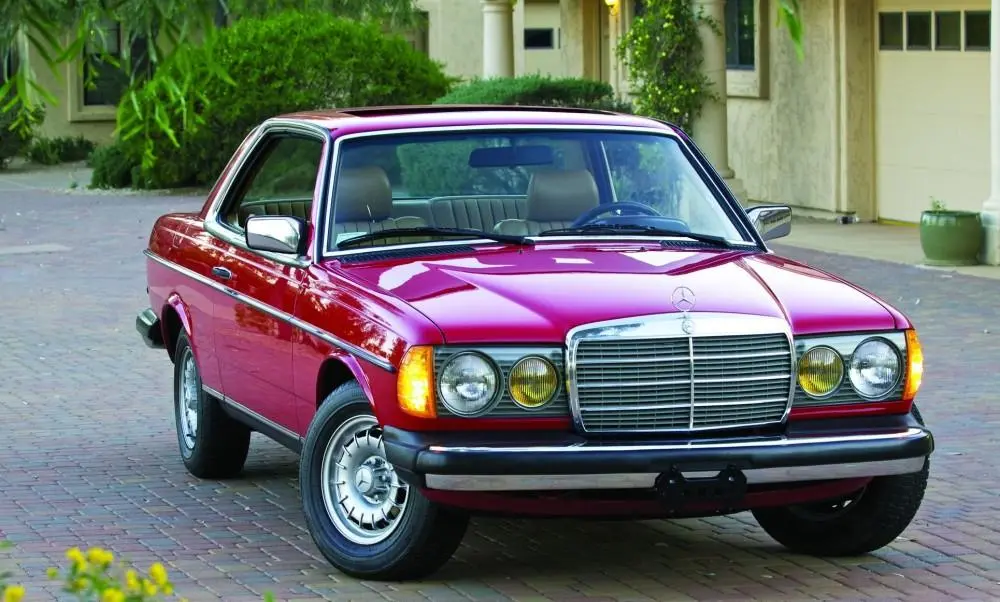
The build quality of the W123 chassis is equally impressive, featuring heavy-gauge steel construction, robust suspension components, and electrical systems designed for decades of service.
Mercedes-Benz engineers of this era prioritized durability over cost-cutting, resulting in components that were often twice as heavy as necessary and built to tolerances that ensured smooth operation well beyond the typical vehicle lifespan.
The transmission, differential, and other drivetrain components were similarly over-built, with many examples still operating on original components after four decades of service.
Maintenance requirements for the W123 300D are refreshingly straightforward, consisting primarily of regular oil changes, filter replacements, and occasional valve adjustments.
The mechanical simplicity of these vehicles means that repairs, when needed, can often be performed by competent home mechanics or independent shops without specialized diagnostic equipment.
This accessibility has contributed to the model’s longevity, as owners can maintain their vehicles economically throughout their extended service life. Many W123 300D owners report operating costs that are remarkably low, with fuel economy figures that remain competitive with modern vehicles despite the car’s age and weight.
2. Volkswagen Golf Mk1 Diesel (1976-1983)
The original Volkswagen Golf diesel, introduced in 1976, represents one of the earliest successful attempts to bring diesel power to the compact car segment, and its success laid the foundation for Volkswagen’s decades-long dominance in the diesel passenger car market.
Built around the robust 1.5-liter naturally aspirated diesel engine, the Mk1 Golf diesel achieved something remarkable for its era: it combined the fuel efficiency and longevity of diesel power with the practicality and affordability of a compact hatchback, creating a formula that would influence automotive design for generations.
The engine in the Golf Mk1 diesel is a masterpiece of simplicity and durability, featuring a cast-iron block and head construction that can withstand tremendous abuse while delivering exceptional fuel economy.
Unlike many modern diesels that rely on complex emissions control systems and high-pressure injection, this early Volkswagen diesel operates with mechanical injection and minimal emissions equipment, resulting in a powerplant that is both reliable and easily serviceable.
The engine’s conservative tuning and robust construction have enabled many examples to exceed 300,000 miles with minimal mechanical intervention, earning the Golf Mk1 diesel a devoted following among enthusiasts who value longevity over performance.
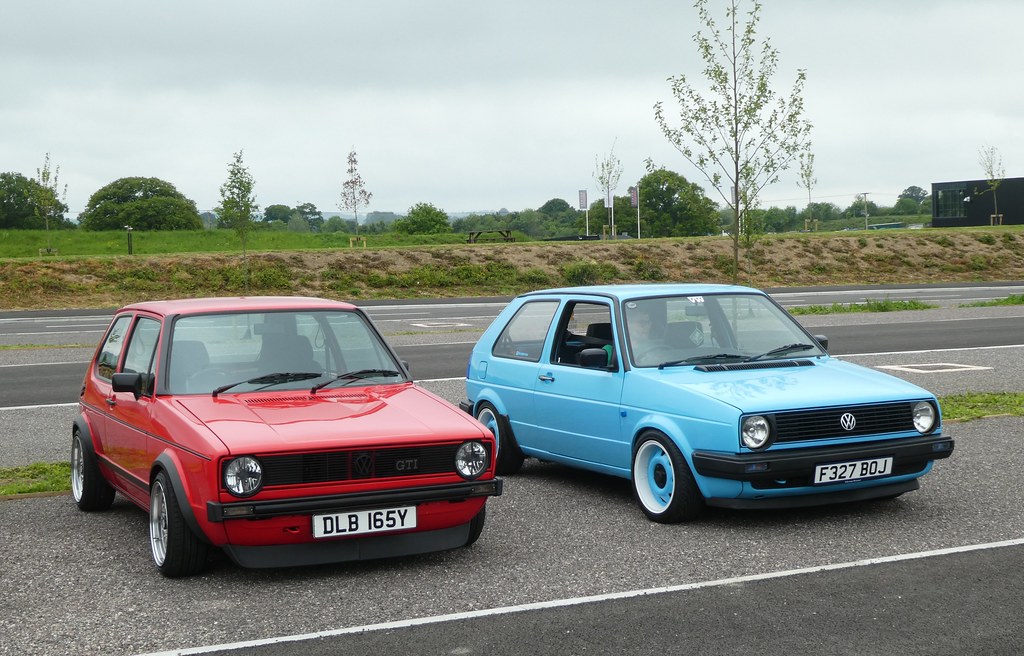
One of the most remarkable aspects of the Golf Mk1 diesel is its incredible fuel efficiency, with many owners reporting real-world fuel economy figures exceeding 50 miles per gallon under normal driving conditions.
This exceptional efficiency, combined with the engine’s longevity, has made these vehicles incredibly cost-effective to operate over their lifetime. The simple mechanical systems mean that maintenance costs remain low, and the widespread availability of parts ensures that these vehicles can be kept running economically for decades.
The Golf Mk1’s chassis and suspension components, while not as over-engineered as those found in Mercedes-Benz vehicles of the era, have proven remarkably durable when properly maintained.
The car’s lightweight construction and efficient packaging have contributed to its longevity, as reduced stress on components translates to extended service life.
Many Golf Mk1 diesels continue to serve as daily transportation in Europe and other markets, testament to Volkswagen’s early mastery of diesel technology and the enduring appeal of simple, reliable engineering.
The model’s success established Volkswagen as a leader in diesel passenger cars and demonstrated that diesel power could be successfully integrated into mainstream automotive applications.
3. Peugeot 505 Turbo Diesel (1979-1992)
The Peugeot 505 Turbo Diesel represents a rare example of early turbo diesel technology executed with exceptional engineering precision and long-term reliability in mind.
While many manufacturers struggled with turbocharger durability in the early days of forced induction diesel engines, Peugeot’s engineers developed a turbocharged system that not only enhanced performance but also maintained the legendary reliability associated with their naturally aspirated diesel engines.
The 505 Turbo Diesel became particularly renowned in African and Middle Eastern markets, where these vehicles continue to operate reliably under extreme conditions decades after production ended.
At the heart of the 505 Turbo Diesel lies Peugeot’s robust XD2 2.3-liter engine, a powerplant that combines the inherent durability of Peugeot’s diesel architecture with carefully engineered turbocharging that enhances performance without compromising longevity.
The turbocharger system was designed with conservative boost levels and adequate cooling, preventing the heat-related failures that plagued many contemporary turbocharged diesels.
Peugeot’s attention to detail in areas such as oil circulation, intercooling, and boost control resulted in a turbo system that could operate reliably for hundreds of thousands of miles when properly maintained.
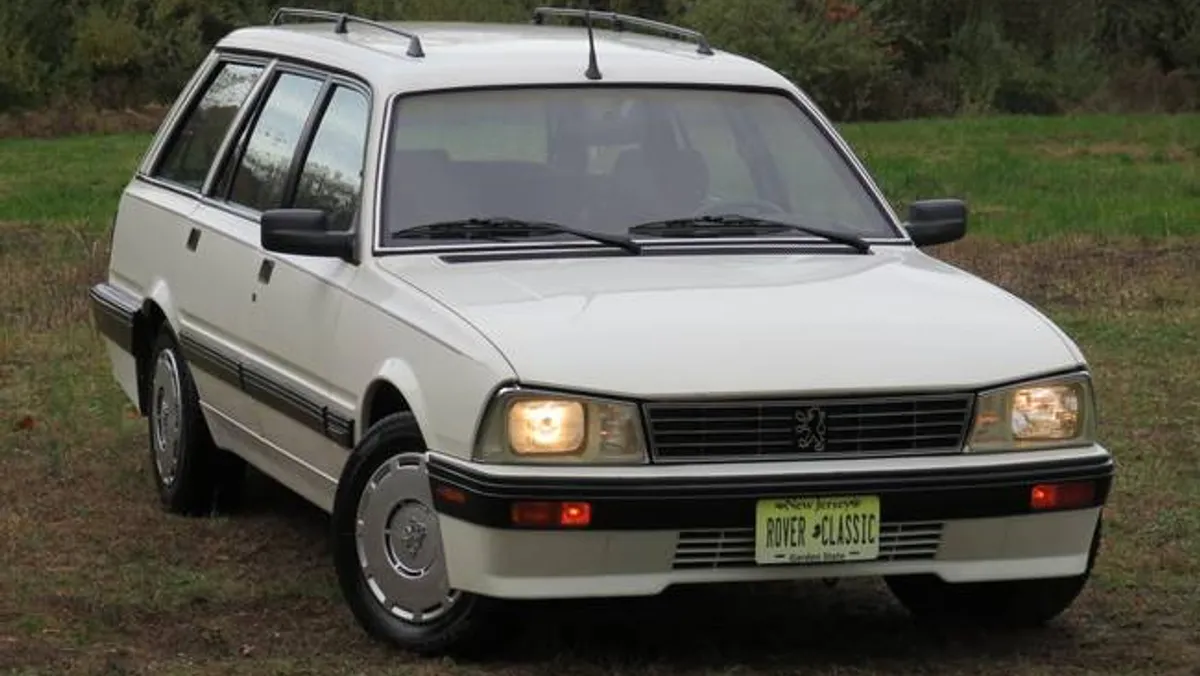
The engine’s construction reflects Peugeot’s decades of diesel expertise, featuring a cast-iron block and head assembly designed to withstand the additional stresses imposed by turbocharging.
The fuel injection system uses robust Bosch components that have proven exceptionally reliable in service, while the engine’s internal components are built to tolerances that ensure smooth operation well beyond typical automotive lifespans.
Many 505 Turbo Diesel engines have exceeded 400,000 miles with only routine maintenance, demonstrating the effectiveness of Peugeot’s conservative engineering approach.
Beyond the powertrain, the 505’s chassis and body construction contribute significantly to the vehicle’s legendary durability. The car features robust suspension components, a well-designed electrical system, and body construction that resists corrosion better than many contemporary vehicles.
In markets where these cars are still common, they continue to serve as taxis, commercial vehicles, and family transportation, often operating under conditions that would quickly destroy less robust vehicles.
The 505 Turbo Diesel’s combination of performance, efficiency, and reliability has made it one of the most respected vehicles in automotive history, particularly in developing markets where reliability is paramount.
4. Toyota Land Cruiser 60 Series Diesel (1980-1990)
The Toyota Land Cruiser 60 Series diesel variants represent the pinnacle of off-road diesel reliability, combining Toyota’s legendary build quality with robust diesel powertrains designed for extreme conditions and extended service life.
These vehicles were engineered specifically for markets where reliability was more important than performance, resulting in trucks that could operate for decades in harsh environments with minimal maintenance infrastructure.
The diesel engines available in the 60 Series, particularly the naturally aspirated variants, have achieved legendary status among off-road enthusiasts and commercial users worldwide.
The most notable engines in the diesel 60 Series lineup include the 2H 4.0-liter inline-six and the 3B 3.4-liter inline-four, both naturally aspirated designs that prioritize longevity over power output.
These engines feature exceptionally robust construction with cast-iron blocks and heads, conservative compression ratios, and mechanical injection systems that can operate reliably even with poor-quality fuel.
The 2H engine, in particular, has become legendary for its ability to run for 500,000 miles or more with basic maintenance, earning it a devoted following among users who require absolute reliability.

Toyota’s engineering philosophy for the 60 Series diesel emphasized simplicity and durability over complexity and performance. The vehicles feature manual transmissions, simple electrical systems, and mechanical components that can be serviced in remote locations with basic tools.
This approach has resulted in vehicles that continue to operate reliably decades after production, often in environments where more sophisticated vehicles would quickly fail.
The diesel variants were particularly popular in Australian, African, and South American markets, where their reputation for reliability made them the preferred choice for commercial and expedition use.
The chassis and drivetrain components of the diesel 60 Series are equally robust, featuring heavy-duty axles, robust suspension components, and electrical systems designed for harsh environments.
The vehicles’ body construction, while showing Toyota’s attention to corrosion resistance, combined with the diesel engines’ longevity, has resulted in many examples that continue to provide reliable service after 300,000 to 500,000 miles.
In many developing markets, these vehicles continue to serve as commercial trucks, safari vehicles, and family transportation, testament to Toyota’s engineering excellence and the enduring appeal of simple, reliable diesel power in demanding applications.
Also Read: 5 Obscure Hybrids That Last vs 5 Popular Hybrids With Fuel Pump Failures
5. Isuzu Trooper Diesel (1981-2002)
The Isuzu Trooper diesel variants, particularly those equipped with naturally aspirated engines, represent one of the most underrated success stories in diesel SUV reliability.
While Isuzu may not have achieved the same recognition as Toyota or Mercedes-Benz in terms of diesel reliability, the Trooper’s diesel engines have consistently demonstrated exceptional longevity and durability, particularly in commercial and off-road applications.
These vehicles were engineered with Isuzu’s commercial vehicle expertise, resulting in passenger SUVs that possessed the reliability characteristics typically associated with commercial trucks.
The heart of the most reliable Trooper diesels is the 4JB1-T 2.8-liter turbocharged four-cylinder engine, though the naturally aspirated variants have shown even greater longevity.
This engine represents Isuzu’s decades of experience in commercial diesel applications, featuring robust construction, conservative tuning, and components designed for extended service intervals.
The engine’s cast-iron construction and mechanical injection system have proven exceptionally reliable, with many examples exceeding 300,000 miles with routine maintenance.
The turbocharged variants, while more powerful, also demonstrate good reliability when properly maintained, though the naturally aspirated engines have shown superior longevity.
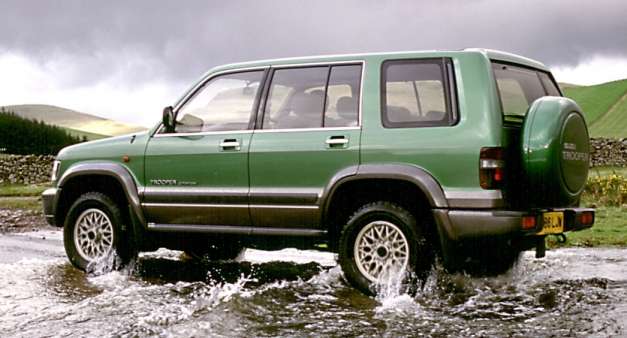
Isuzu’s commercial vehicle background is evident throughout the Trooper’s construction, with chassis components, drivetrain elements, and electrical systems that reflect truck-grade engineering standards.
The vehicle’s four-wheel-drive system is particularly robust, featuring components derived from Isuzu’s commercial truck lineup that can withstand extreme abuse while maintaining reliability.
This commercial-grade construction has resulted in vehicles that continue to provide reliable service long after contemporary SUVs have been retired, particularly in markets where these vehicles are used for commercial purposes.
The Trooper diesel’s reputation for reliability has made it particularly popular in developing markets and among users who require dependable transportation in challenging conditions.
Many examples continue to operate as commercial vehicles, emergency services trucks, and expedition vehicles, often accumulating extremely high mileages while maintaining their reliability.
The combination of Isuzu’s diesel expertise, robust construction, and conservative engineering has created vehicles that, while rare in many markets, have earned a devoted following among those who value reliability above all other considerations. The Trooper diesel represents proof that exceptional reliability can come from unexpected sources when proper engineering principles are applied.
5 Common Diesels With Early Turbo Failures
These widely available diesel vehicles plague owners with premature turbocharger failures, expensive rebuilds, and recurring boost system problems that contradict diesel reputation for durability and economic operation while generating astronomical repair bills.
Their problematic forced induction systems incorporate inadequate lubrication, excessive heat buildup, and design flaws that cause turbine shaft failures despite manufacturer claims of enhanced performance and fuel efficiency over naturally aspirated alternatives.
The combination of complex emissions equipment, high operating temperatures, and cost-cutting measures creates ownership disasters as buyers discover that diesel fuel economy means nothing when turbocharger replacements cost thousands of dollars every few years.
From popular manufacturers with known turbo issues to mainstream models with inadequate cooling capacity, these vehicles prove that diesel technology and fuel efficiency claims cannot compensate for fundamental reliability problems in critical forced induction components that transform economical transportation into expensive maintenance nightmares requiring constant professional attention.
1. BMW 320d/330d (E90/E91/E92/E93 Generation 2005-2012)
The BMW 3 Series diesel models from the E90 generation, particularly the 320d and 330d variants, represent a cautionary tale of how aggressive engineering for performance and emissions compliance can compromise long-term reliability.
While these vehicles offered exceptional performance and fuel economy when new, they have become notorious for premature turbocharger failures that often occur well before 100,000 miles, leaving owners facing repair bills that can exceed the vehicle’s value.
The problems stem from BMW’s ambitious attempt to extract maximum performance from relatively small displacement engines while meeting increasingly stringent emissions standards.
The heart of the problem lies in the N47 engine family used in these models, which features advanced twin-turbo configurations and sophisticated emissions control systems that operate under extreme conditions.
BMW’s engineers pushed these engines to their limits to achieve the performance figures necessary to compete with naturally aspirated gasoline engines while maintaining diesel fuel economy advantages.
The result was a powerplant that delivered impressive performance when new but suffered from numerous reliability issues as components aged and operating conditions became more demanding.
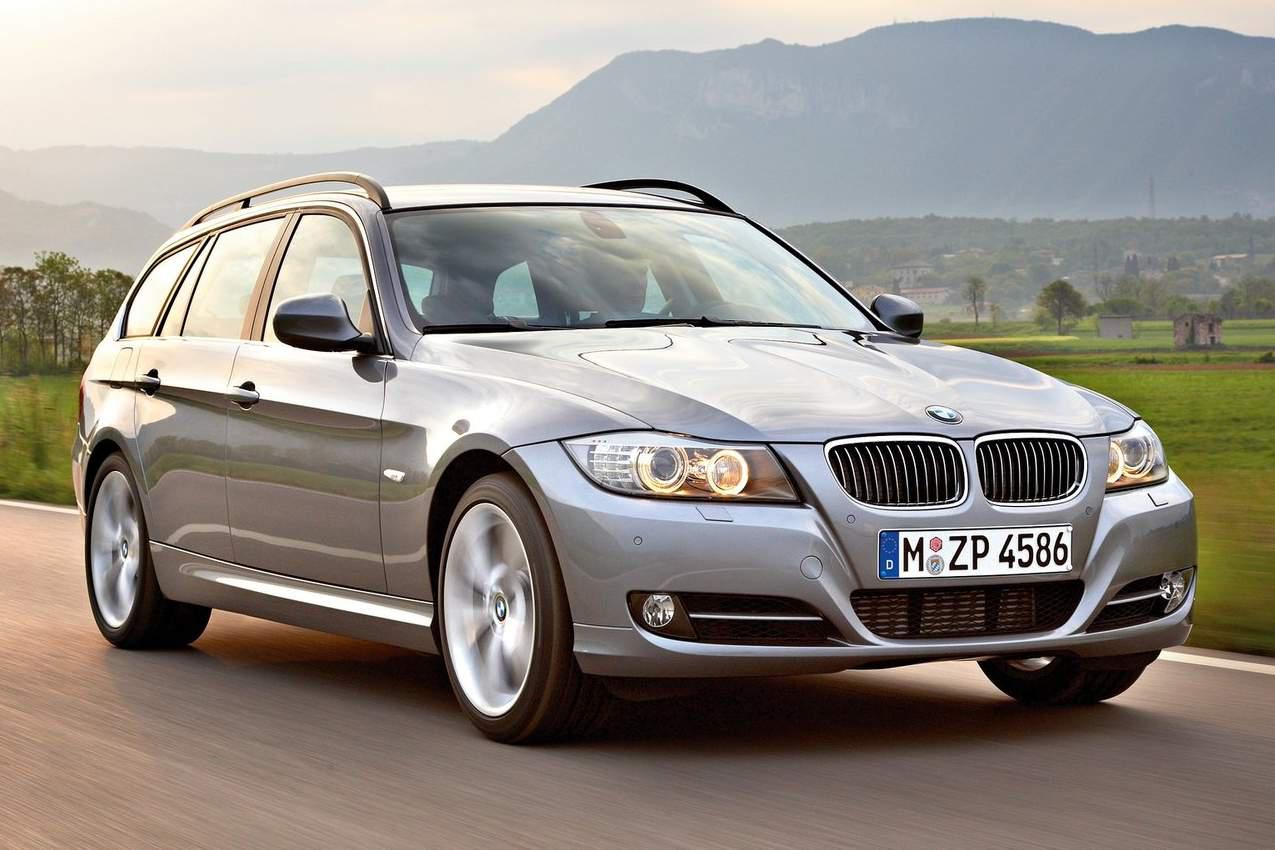
Turbocharger failures in these BMW diesels typically manifest in several ways, including bearing failure due to inadequate lubrication, carbon buildup that restricts oil flow, and electronic actuator problems that prevent proper boost control.
The high-pressure turbocharging system operates at extreme temperatures and pressures, while the complex variable geometry turbocharger components are particularly susceptible to carbon fouling and mechanical wear.
Many owners report turbocharger failures between 60,000 and 80,000 miles, often accompanied by expensive damage to other engine components due to oil contamination or debris ingestion.
The complexity of these engines extends beyond the turbocharging system to include sophisticated fuel injection, emissions control, and engine management systems that require specialized diagnostic equipment and expert knowledge to service properly.
When turbocharger failures occur, the repair process often involves replacing not just the turbocharger but also associated sensors, actuators, and control modules, resulting in repair costs that can easily exceed $5,000 to $8,000.
The high cost of maintenance and repairs, combined with the frequency of failures, has made these vehicles increasingly expensive to own as they age, despite their initial appeal and impressive performance capabilities when operating properly.
2. Volkswagen TDI Engines (2009-2015 EA189 Generation)
The Volkswagen TDI engines from the EA189 generation, found in models like the Jetta, Golf, and Passat, have become synonymous with both environmental scandal and reliability concerns, particularly regarding turbocharger longevity.
While these engines were initially praised for their impressive fuel economy and performance, they have since developed a reputation for premature turbo failures that often occur between 80,000 and 120,000 miles.
The problems are compounded by the complex emissions control systems that were central to the dieselgate scandal, creating a perfect storm of reliability and environmental compliance issues.
The EA189 engines feature sophisticated turbocharging systems designed to provide strong performance across a wide RPM range while meeting strict emissions standards.
However, the aggressive tuning required to achieve these goals has resulted in turbochargers that operate under extreme conditions, with boost pressures and exhaust gas temperatures that push components beyond their optimal operating parameters.
The variable geometry turbochargers used in these engines are particularly problematic, with electronic actuators and complex internal mechanisms that are susceptible to carbon buildup, electronic failures, and mechanical wear.
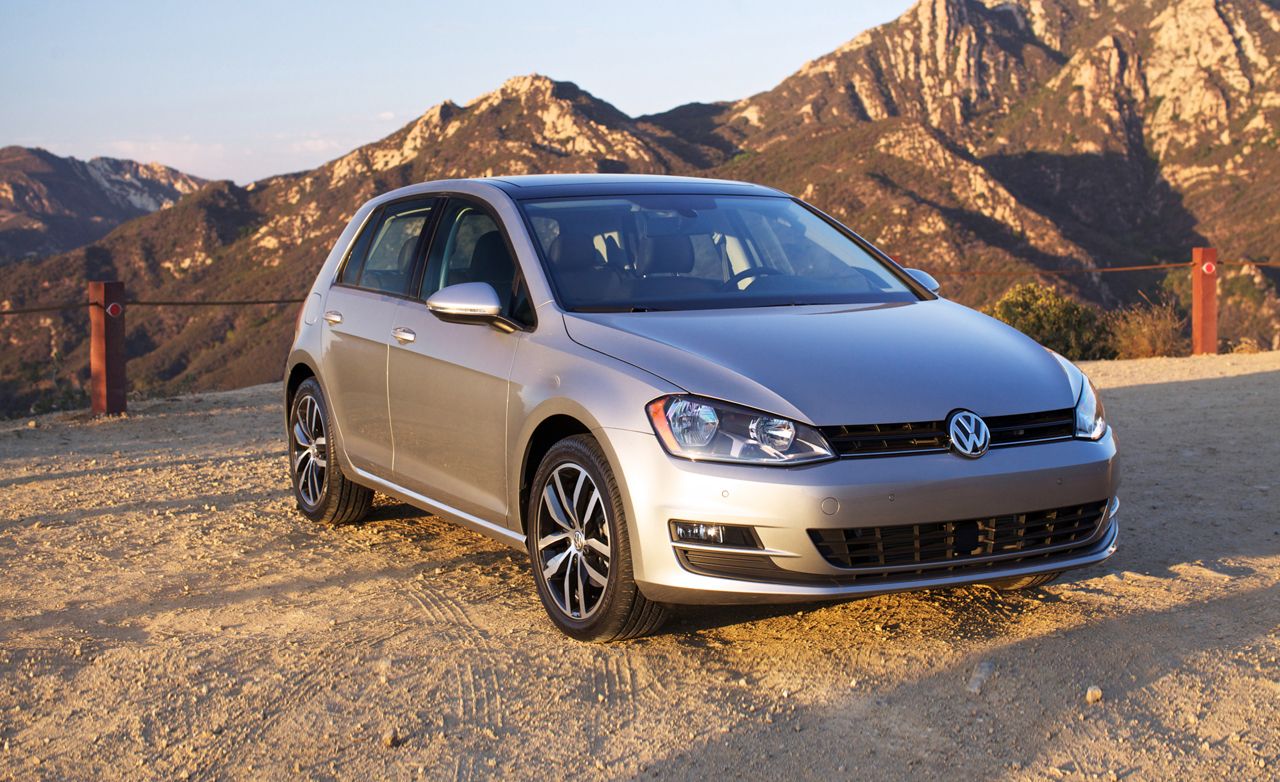
Carbon buildup represents one of the most significant challenges facing these engines, as the combination of exhaust gas recirculation (EGR) systems and direct injection creates conditions that promote carbon accumulation throughout the intake system and turbocharger.
This buildup restricts airflow, increases operating temperatures, and can cause mechanical damage to turbocharger components. The problem is exacerbated by driving patterns that don’t allow the engine to reach optimal operating temperatures regularly, such as short-distance city driving that prevents the EGR and particulate filter systems from completing their cleaning cycles.
When turbocharger failures occur in these Volkswagen TDI engines, the repair process is often complicated by the integrated nature of the emissions control systems.
Replacing a failed turbocharger may require updating software, replacing associated sensors and actuators, and ensuring that all emissions control systems are functioning properly.
The cost of these repairs can range from $3,000 to $6,000, and many owners discover that turbocharger failure is often accompanied by problems with other emissions control components, further increasing repair costs.
The complexity of these systems has made independent repair increasingly difficult, forcing owners to rely on dealership service departments that charge premium rates for specialized knowledge and equipment.
3. Ford Transit/Transit Connect 2.2 TDCi (2006-2016)
The Ford Transit and Transit Connect models equipped with the 2.2-liter TDCi engine have earned an unfortunate reputation for turbocharger reliability issues that have affected commercial operators and private owners alike.
These vehicles, which were designed to provide efficient commercial transportation with low operating costs, have instead become notorious for turbo failures that often occur at relatively low mileages, sometimes as early as 50,000 to 70,000 miles.
The problems have been particularly frustrating for commercial users who purchased these vehicles expecting the reliability traditionally associated with commercial diesel engines.
The 2.2 TDCi engine represents Ford’s attempt to create a modern, efficient diesel powerplant that could meet increasingly stringent emissions standards while providing the performance and fuel economy demanded by commercial users.
However, the engine’s design incorporates several features that have proven problematic in real-world operation, including a complex variable geometry turbocharger system, sophisticated emissions control equipment, and aggressive tuning that prioritizes performance and emissions compliance over long-term durability.
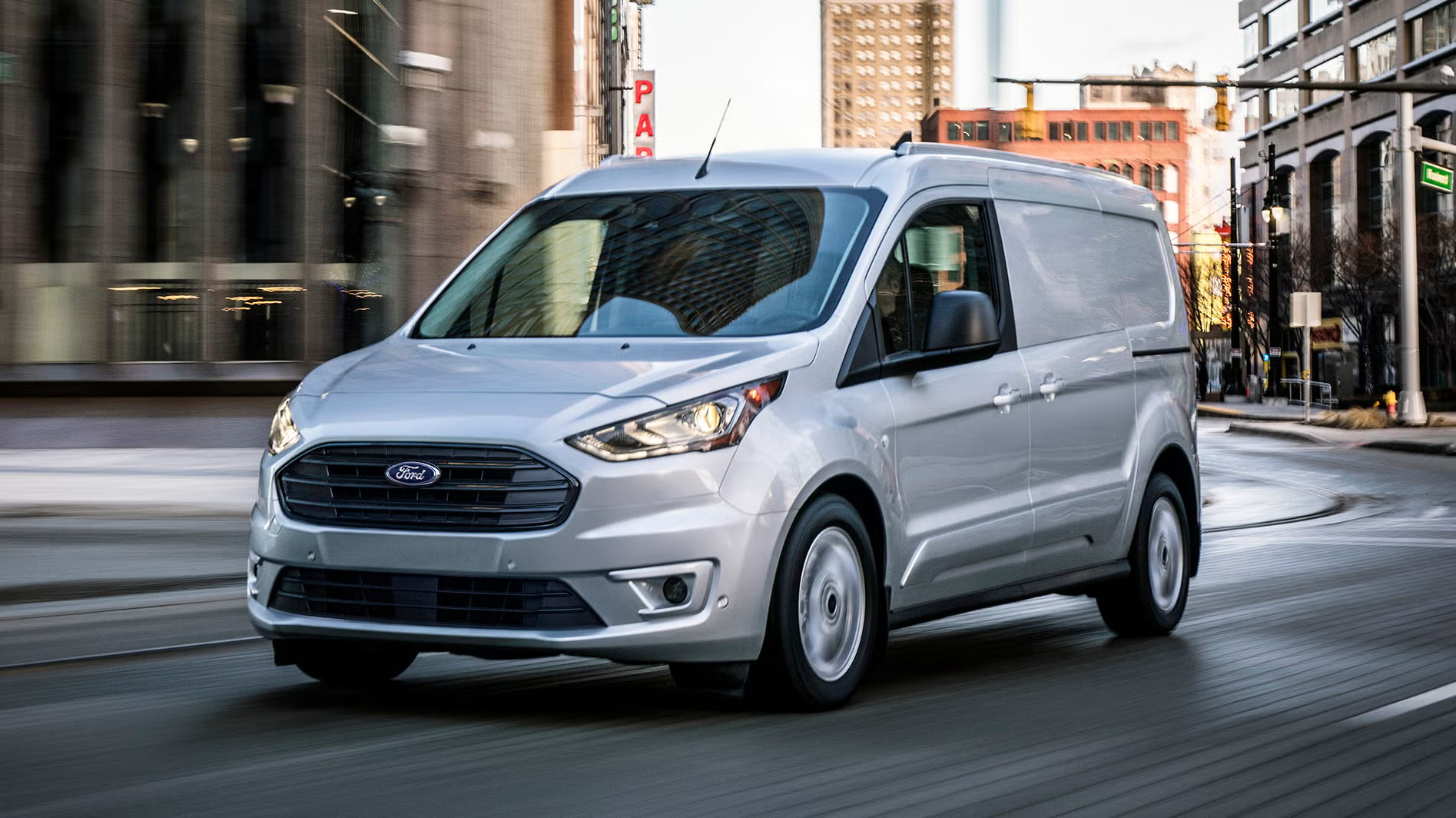
Turbocharger failures in these Ford diesels typically result from a combination of factors, including inadequate lubrication systems, excessive carbon buildup, and electronic control problems.
The variable geometry turbocharger system is particularly susceptible to carbon fouling, which can cause the variable vanes to stick or bind, leading to reduced performance and eventual mechanical failure.
The turbocharger’s oil supply system has also proven problematic, with restricted oil passages and inadequate drainage causing bearing failures and shaft damage.
The impact of these turbocharger failures extends beyond the immediate repair costs, as commercial operators often face significant downtime and lost revenue while vehicles are being repaired.
The complexity of the turbocharger system and its integration with the engine’s emissions control equipment means that repairs often require specialized knowledge and equipment, limiting options for independent repair facilities.
Many owners have reported repair costs ranging from $2,500 to $4,500 for turbocharger replacement, with additional costs for associated damage to other engine components.
The frequency of these failures has led to decreased resale values and increased insurance costs for these vehicles, making them less attractive options for commercial operators who require reliable, cost-effective transportation.
4. Jeep Grand Cherokee 3.0 CRD (2011-2016)
The Jeep Grand Cherokee equipped with the 3.0-liter CRD diesel engine, developed in partnership with VM Motori, represents another example of how complex modern diesel technology can compromise reliability despite impressive performance capabilities.
While this engine offered exceptional fuel economy and towing capacity for a full-size SUV, it has developed a concerning reputation for turbocharger failures that often occur between 60,000 and 100,000 miles, leaving owners facing expensive repairs and extended downtime. The problems highlight the challenges of adapting European diesel technology for American market conditions and expectations.
The 3.0 CRD engine features advanced turbocharging technology designed to provide strong performance across a wide range of operating conditions while meeting strict emissions standards.
The engine utilizes a sophisticated variable geometry turbocharger system that can adjust boost levels based on engine speed, load, and emissions requirements.
However, this complexity has proven to be a liability in real-world operation, with electronic actuators, complex internal mechanisms, and high operating temperatures contributing to premature failures.
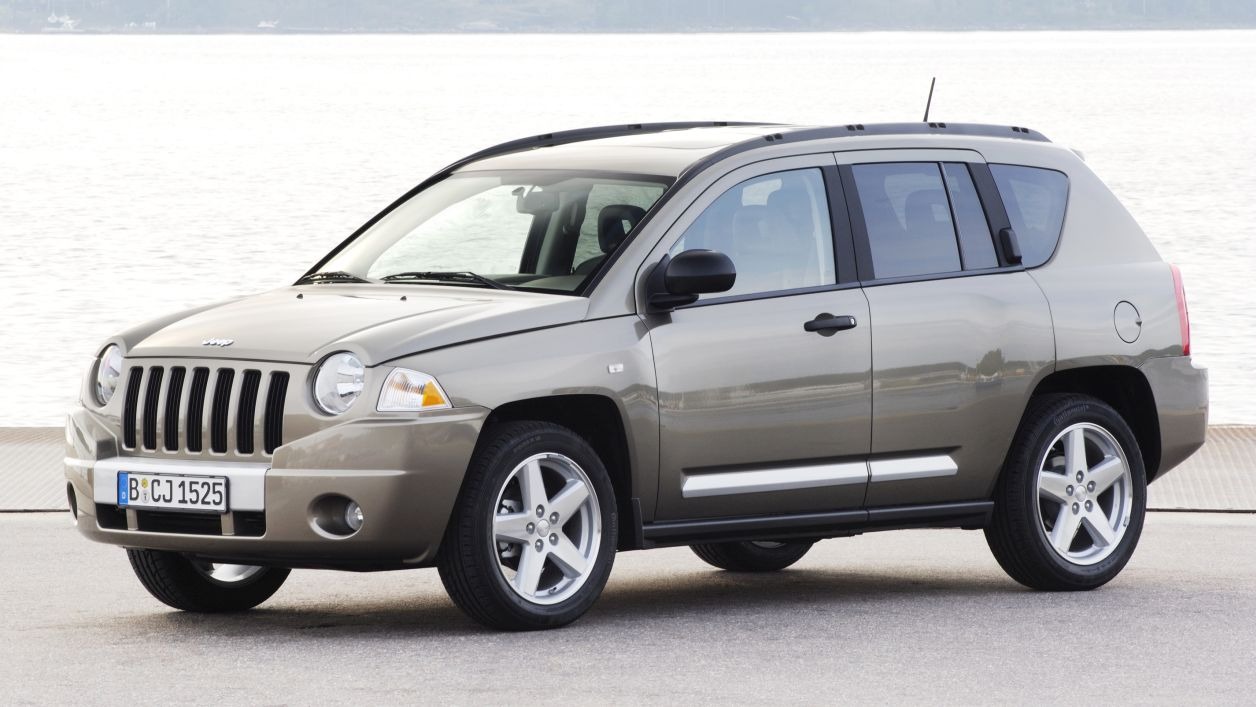
One of the most significant issues affecting the Grand Cherokee’s turbocharger reliability is the engine’s sensitivity to oil quality and change intervals.
The high-pressure turbocharger system requires exceptional lubrication to operate reliably, and any degradation in oil quality or extension of service intervals can result in rapid component wear and failure.
Many owners who followed standard maintenance schedules designed for gasoline engines have experienced premature turbocharger failures, while those who adopted more aggressive maintenance regimens have achieved better reliability.
The cost and complexity of turbocharger repairs on the Grand Cherokee CRD have proven particularly challenging for owners, as the engine’s European origins mean that parts availability and technical expertise are limited in many markets.
Repair costs often range from $4,000 to $7,000, and the specialized nature of the engine means that many independent repair facilities are unable to properly diagnose and repair turbocharger problems.
The situation is further complicated by the engine’s integration with sophisticated emissions control systems that must be properly calibrated after turbocharger replacement, often requiring dealer-level diagnostic equipment and software.
These factors have combined to make the Grand Cherokee CRD increasingly expensive to maintain as it ages, despite its impressive capabilities when operating properly.
5. Range Rover Sport/Discovery 3.0 SDV6 (2010-2016)
The Range Rover Sport and Discovery models equipped with the 3.0-liter SDV6 diesel engine represent Land Rover’s ambitious attempt to combine luxury performance with diesel efficiency, but these vehicles have become notorious for turbocharger reliability issues that can devastate owners financially.
The twin-turbo diesel engine was designed to provide exceptional performance and refinement while maintaining the fuel economy advantages associated with diesel power.
However, the complexity of the turbocharging system and the extreme operating conditions required to achieve the desired performance levels have resulted in premature failures that often occur well before 100,000 miles.
The SDV6 engine features a sophisticated twin-turbo arrangement with sequential turbocharging designed to provide strong performance across the entire RPM range while minimizing turbo lag.
The system uses a smaller turbocharger for low-RPM response and a larger unit for high-RPM power, with complex electronic controls managing the transition between operating modes.
While this technology delivers impressive performance when functioning properly, the complexity of the system has proven to be its Achilles’ heel, with numerous electronic and mechanical components that can fail and cause cascading problems throughout the engine.
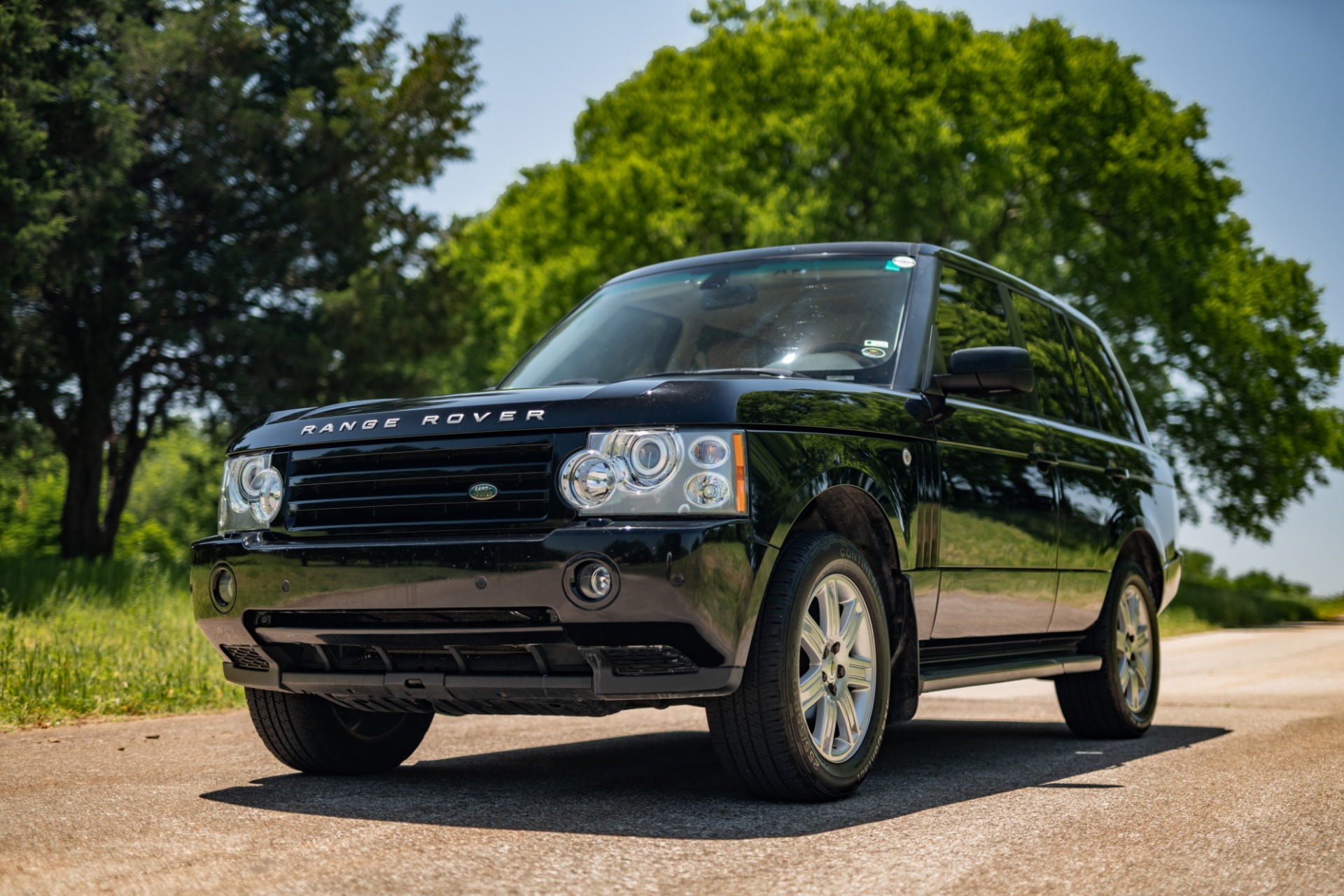
Turbocharger failures in these Land Rover diesels often begin with electronic actuator problems that prevent proper boost control, leading to overboost conditions that can damage internal engine components.
The high-pressure turbocharging system operates at extreme temperatures and pressures, while carbon buildup from the emissions control systems can restrict oil flow and cause bearing failures.
Many owners report initial symptoms such as reduced power, increased fuel consumption, and unusual noises, followed by complete turbocharger failure that often damages other expensive engine components.
The financial impact of turbocharger failures on these luxury SUVs is particularly severe, with repair costs often ranging from $6,000 to $12,000 depending on the extent of associated damage.
The complexity of the twin-turbo system means that failures often affect multiple components, and the integration with sophisticated engine management and emissions control systems requires extensive calibration and testing after repairs.
Many owners discover that turbocharger failure is accompanied by damage to intercoolers, exhaust systems, and engine internals, further inflating repair costs.
The high cost of maintenance and the frequency of failures have significantly impacted resale values for these vehicles, making them risky purchases for buyers seeking reliable luxury transportation.
The situation has been particularly frustrating for owners who expected the reliability traditionally associated with Land Rover’s naturally aspirated engines and were unprepared for the complexity and cost of maintaining modern turbocharged diesel technology.
Also Read: 5 Forgotten Luxury Cars That Run Forever vs 5 Overhyped Luxury Models That Break

